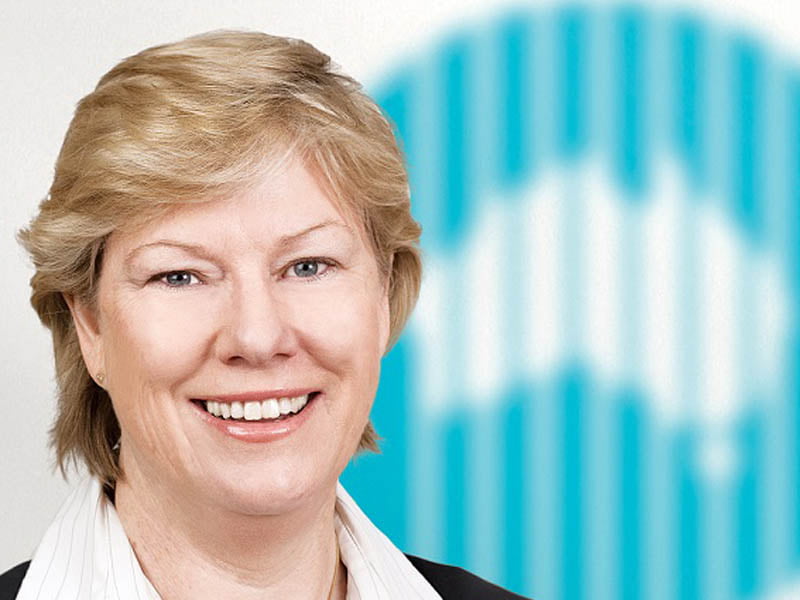Australia is late to the party in relation to the space sector, according to the newly-appointed Australian Government space tsar Megan Clark, but we’ve ended up with the most industry-focussed national agency in the world.
Dr Clark said the key roles that the industry had demanded of the new Australian Space Agency was to provide a single door for industry and a single voice in international interactions; to provide a clear and consistent national strategic policy in the area of civil space; and the enabling infrastructure to allow the local industry to flourish.
“And the industry wanted Australians to be inspired by what Australia could do,” Dr Clark told an Australia Israel Chamber of Commerce luncheon earlier this month.

“There was a sense of frustration [in the industry] that we knew in this country that we had the capability and the capacity, the entrepreneurship and the creativity … we had absolutely everything that we needed, and yet we were nowhere in this game.”
For all of the reviews of the past decade and all of the debate about the establishment of an agency, its purpose is pretty simple: “to transform and grow the space industry in Australia and to make sure that the application of space underpins the growth of the broader economy.”
“To do that we will need to engage nationally and internationally. And if we do all of that right, then we will both inspire Australians and improve the lives of all Australians,” Dr Clark said.
Before the May 8 budget announcement, Australia was one of just two OECD countries that did not have a dedicated space agency. Now Iceland is the Lone Ranger in this regard.
“We are very late to this party, but we are coming into it at a time when the industry is transforming. It’s not a bad time to be entering this area,” she said.
“Our purpose will make us one of the most industry-focused space agencies in the world.”
The agency was given $26 million over four years to get up and running, with a further $15 million available from 2019/20 to fund participation in international space projects. The investment was criticised in some quarters as too low.
But Dr Clark maintains that government made a huge statement in the budget this year, with a total of $300 million in new money put into the space sector.
This included big funding to improve the nation’s position, navigation and timing infrastructure (around GPS technology), as well as money to fully commercialise the Digital Earth Australia (DEA) platform.
She said the positioning investment will radically improve accuracy across all Australian land, marine and airspace jurisdictions. It will leap-frog generations of technology and create a world-class infrastructure.
Dr Clark said internationally the agency has prioritised engagements with Australia’s Five Eyes intelligence sharing partners – the US, UK, Canada and NZ – as well as France, Japan and possibly Germany for international space partnerships.
Blackbird Ventures partner Niki Scevak says a national space agency is a no-brainer, given the huge amount of startup activity in the sector in Australia.
A confluence of factors had made space ventures inexpensive, or at least measured in the millions of dollars, rather than the hundreds of millions or billions.
He says the base components of a smartphone have reduced dramatically as sales volumes increased, making the underlying electronics of satellite tech cheaper than ever.
There had been a similar disruption in the approach to manufacturing, where software models are now applied to production. Gilmour Space Technologies – a Blackbird portfolio company – is 3D printing rocket parts, and even printing parts of its rocket and rocket engine.
“For a few million dollars, in 12 or 18 months you can make a lot of progress,” Mr Scevak told the AICC lunch.
“Gilmour raised $4 million from [Blackbird] and a few others in April of last year, and they are hoping in the third quarter to do a sub-orbital launch to 70kms and still have money left over from that round,” he said.
“That’s quite amazing, and which might have previously taken a Prime Minister’s budget approval and billions of dollars of aerospace company research and decades of effort, you can now do so cheaply and so quickly because of these forces that have happened in the software world that are now making it into the space world,” he said.
Alex Grant, the chief executive officer at Adelaide-based startup Myriota – which just closed a $15 million Series A funding round – says there are about 30 startups working on space-related projects in Australia right now.
The opportunity is about the reduced cost and increased availability of space infrastructure. “The focus now is on the software and services which are enabled by the availability of those platforms,” Mr Grant said.
“It reminds me of where we were in the late 80’s and 90’s where the reduced cost of hardware shifted the play to software. We’re living that out now in the cloud in its purest form, where innovation at a very conceptual level can now reach the market very quickly,” he said.
“What blows my mind is when you see those principles applied to the physical … So when you have someone 3D printing a rocket engine, what they’re actually doing is turning a complicated mechanical engineering, fluid dynamics aero problem into a numerical optimisation software problem and printing it.”
“The opportunities are wide open.”
Do you know more? Contact James Riley via Email.

